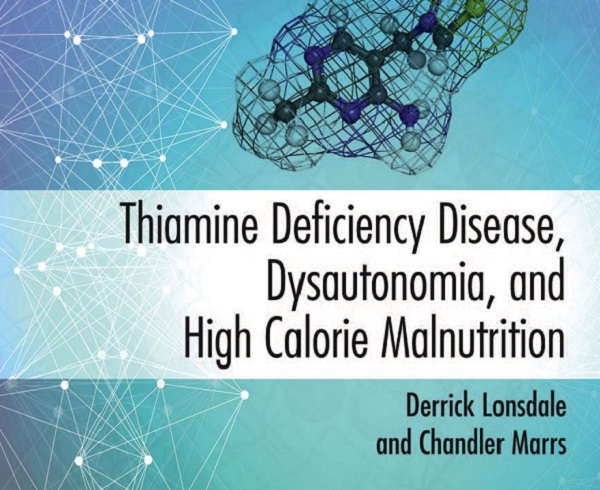What is a Medical Model?
In the Oxford English dictionary the word model is defined as “design to be followed, style of structure”. Then it follows that there must be a model to distinguish health from disease, that differentiates the two states of being. No disease can be treated without knowing exactly what caused it. Let us go back to Hippocrates, 400 BCE, who said “let food be your medicine and your medicine be your food”. What Hippocrates was saying was essentially that nutrition was the core issue in the maintenance of health. At this time and throughout the Middle Ages there was no model for the cause of disease. Consequently, treatment was extremely primitive and almost purely empirical. In the time of ancient Egypt it was believed that mental illness was caused by the presence of evil spirits in a person’s head. They bored holes in the skull to let the evil spirits out. If you think about that, perhaps it relieved the occasional headache because of increased pressure in the skull caused by a brain tumor. Hence, a few successes might have caused it to be retained as beneficial. During the Middle Ages, the only treatment that seems to have been used is bloodletting. It might have been temporarily useful in people with high blood pressure. A few successes yielded the conclusion that it was beneficial for all disease.
The First Controlled Experiment
Semmelweis was a 19 th century Hungarian physician. In those days, the incidence of puerperal disease (childbed fever) was absurdly high. Semmelweis made the observation that doctors, delivering their patients, entered the delivery room and went directly to their patients without changing their garments or washing. He came to the simple conclusion that the doctors were bringing something in with their hands that caused the problem. The obstetric ward consisted of a number of beds on each side of the room and Semmelweis directed that doctors delivering their patients on one side should wash their hands in chlorinated lime, while doctors on the other side of the room would continue in the old way. Of course, the incidence of childbed fever was so different that it did not need a statistician to document the difference. Semmelweis’s observations conflicted with the established scientific and medical opinions of the time, particularly as he was unable to explain what was on the hands of the doctors. Some doctors were even offended at the suggestion that they should wash their hands. It is truly an amazing vision of human behavior. Innovation carries with it loss of reputation for the innovator, no matter how successful the innovation. Well, of course everyone today knows that it was microorganisms on the hands of the doctors that caused the disease, but they had not yet been discovered. Poor Semmelweis wound up in a lunatic asylum and died in his 40s after a beating by attendants. Today, he is regarded as the first person to introduce antiseptic medicine.
The First Paradigm in Medicine: Microscopic Organisms
Most people are aware that the invention of the microscope, and the work of historical figures like Louis Pasteur, led to the discovery of organisms, that could only be seen with the microscope, caused what we now call infection. We are all familiar with the fact that a tremendous number of diseases are due to infection by bacteria, viruses or fungi. It was a perfectly logical conclusion that the development of treatment should be aimed at killing these organisms. This was the first paradigm in medicine, meaning that it was accepted by all. A glance at history will tell us that the search for medication that would kill these organisms was hard won. It was difficult to find something that would kill the germs without killing the patient and many patients lost their lives as a result of this search. The discovery of penicillin represented a dramatic change in perspective as it gave birth to the antibiotic age. Millions of lives have been saved. However, we are now entering an era where the development of antibiotic resistance is becoming an increasing problem. More and more potentially damaging antibiotics have been synthesized that present their own problems in therapy.
The Second Paradigm in Medicine: Immunity
It has been said that Louis Pasteur made the statement on his deathbed, “I was wrong: it is the defenses of the body that matter”. I believe that this may well become the second paradigm in medicine. So what are we talking about? Everyone recognizes that we have immunity but the average person has only the vaguest idea of what this really means. In fact, body defenses against infection are exquisitely complex and incredibly efficient when the immune system is healthy. The primary mechanism for health maintenance is exactly what Hippocrates said, not only the quantity but the quality of nutrition. By recognizing this, the concept is offered that preventive medicine, the use of nutrients based on a knowledge of the biochemical machinery that give our cells function, is the second paradigm.
Presently, we stimulate our immunity by the use of vaccines. However, each vaccine gives a protection to a specific microorganism, perhaps the best example being the flu. Most of us are aware that there are many strains of the flu virus and it may not be possible to predict the particular strain responsible for the “next epidemic”. Natural immune defense mechanisms recognize most invaders as “enemies”. Those whose adaptive/immune mechanisms cannot respond will succumb to the infection. Assisting the immunity mechanisms by making energy synthesis as efficient as possible and killing the “enemy” with maximum safety to the patient might just be the way of the future.
How the Body Responds to Environmental Stressors
Each one of us comes with a “blueprint” derived from our parents in the form of genes that carry a code called DNA. This code is unique for each person and provides the structure that makes up a living person. The body is composed of 70 to 100 trillion cells, all of which have to cooperate to produce what we call function. I think of it being like an orchestra where all the organs are made up of cells, each one of which has a specific specialty to provide its contribution. Like instrumentalists in an orchestra, the cells within each body organ have to work together. This requires a conductor, a function that is performed by the subconscious brain. Coordination is administered through an automatic (autonomic) nervous system and a bunch of glands known as the endocrine system that produce messengers called hormones.
Consider what happens when a person is attacked by a pathogenic Streptococcus, for example. The throat becomes sore, the marker of inflammation. Controlled and executed through the brain, it increases local blood supply, bringing white blood cells into the area and is part of a defensive process. Glands in the neck become enlarged and this is also a defensive process, designed to catch and destroy the germs beginning to spread. Body temperature becomes elevated because disease producing bacteria are most virulent at normal body temperature and their efficiency is reduced at a higher body temperature. A standard procedure in medicine for many years has been to reduce the fever and it has always seemed to me to be a disadvantage, based on this explanation. We sweat when the environmental temperature is high and evaporation from the skin results in cooling. When the environmental temperature is low, we shiver and the muscular activity produces heat to maintain body temperature. These are examples of how we are able to adapt to changes in our environment that threaten our well-being. All of this is purely automatic and the only thing to complete the picture is how our food (fuel) is used to create energy. Maximum efficiency of brain metabolism is mandatory. Assist and protect the “conductor”.
How We Create Energy: Enter the Mitochondria
Because any form of burning is the union of oxygen with the fuel, in the body it is termed oxidation. The process is complex and many vitamins and minerals are involved, besides calories. It has long been known that thiamine (vitamin B1) deficiency is the cause of beriberi, the disease that had plagued humanity for thousands of years. Because this deficiency affects every cell in the body, it can degrade the efficiency of virtually any organ. But because different tissues have their own rate of metabolism and the brain and heart are the two tissues that require fast and efficient oxidation, it is the cells in those tissues that are most affected. Therefore, thiamine deficiency has its major effect in the brain and heart, but they are not exclusive.
Glucose is the main fuel, but like any other fuel used to produce energy, it has to be ignited. Thiamine, much like a spark plug in a car, processes this ignition. All simple sugars taken in the diet are broken down to glucose. But before this happens in the body, dietary sugars have two effects. The first is a signal from the tongue to the pleasure zones of the brain. It is this sweet taste that makes sugar addictive. The second is that this excess of sugar overwhelms the capacity of thiamine to oxidize glucose to create energy. A person may have a perfectly normal thiamine level in the blood that is inadequate to meet the demand. It is the ratio of “empty carbohydrate calories” to the concentration of available thiamine that counts. I have called this “high calorie malnutrition” that seems to be an oxymoron since malnutrition is generally considered to be on the way to starvation. The patients with this form of malnutrition may be obese, remain relatively active, do not look ill and multiple symptoms are regarded by their physicians as “psychologic, or psychosomatic”. There appears to be no reason to seek laboratory evidence of malnutrition and the patient is written off as a “problem patient”. It is hardly surprising that the patient leaves the doctor’s office angry and tells friends that “the doctor told me that it was all in my head”.
The irony is that it IS in the patient’s head, but because of electro-chemical changes in brain metabolism. It has always seemed odd to me that physicians often consider that “psychological issues” are somehow “invented” by patients without thinking that every thought, every action, has a mechanism produced in a chemical “machine” called a brain. Distortions are the result of a combination of cellular energy deficiency (malnutrition), coupled with a potential genetic risk and perhaps a stress factor such as an otherwise mild infection/injury, or an inoculation. Any one of the three factors may dominate the clinical presentation, but in most cases the other two are involved.
A New Model: Genetics, Nutrition, and Stress
Throughout life each of us depends on our ability to survive in an essentially hostile environment. The first thing that it depends upon is our genetic inheritance that I have called “the blueprint”. But we also know that the “engines” of our cells, known as mitochondria, have their own genes in which the DNA is more susceptible to damage than our cellular genes. A new model must consider the fact that any stress requires energy in an adaptive response to any form of environmental attack resulting from a mental or physical problem or infection. The only way that we can protect the structural components of our bodies is by the use of the natural ingredients of nutrition, the ancient teaching of Hippocrates. The new science of epigenetics finds evidence that nutrition and lifestyle can make changes to our genes that might be beneficial or not, according to the circumstances. If a person has become sick from an excess of empty calories and refuses to change, the only way to treat that person would be by increasing the concentration of the missing nutritional ingredient in the form of a supplement. It is of paramount interest that in 1962 a paper was written in a prestigious medical journal. The author had found 696 medical journal manuscripts that reported 250 different diseases that had been treated with supplementary thiamine, with varying degrees of success. This suggests the possibility that health is produced by a combination of genetic influence, how we meet the daily impacts of stress and the quality of our nutrition. Disease results from, either genetic failure (cellular or mitochondrial), failure to meet stress because of energy deficiency, malnutrition, or combinations of the three elements.
We Need Your Help
More people than ever are reading Hormones Matter, a testament to the need for independent voices in health and medicine. We are not funded and accept limited advertising. Unlike many health sites, we don’t force you to purchase a subscription. We believe health information should be open to all. If you read Hormones Matter, like it, please help support it. Contribute now.
Yes, I would like to support Hormones Matter.
Photo by Sebastian Unrau on Unsplash.





















